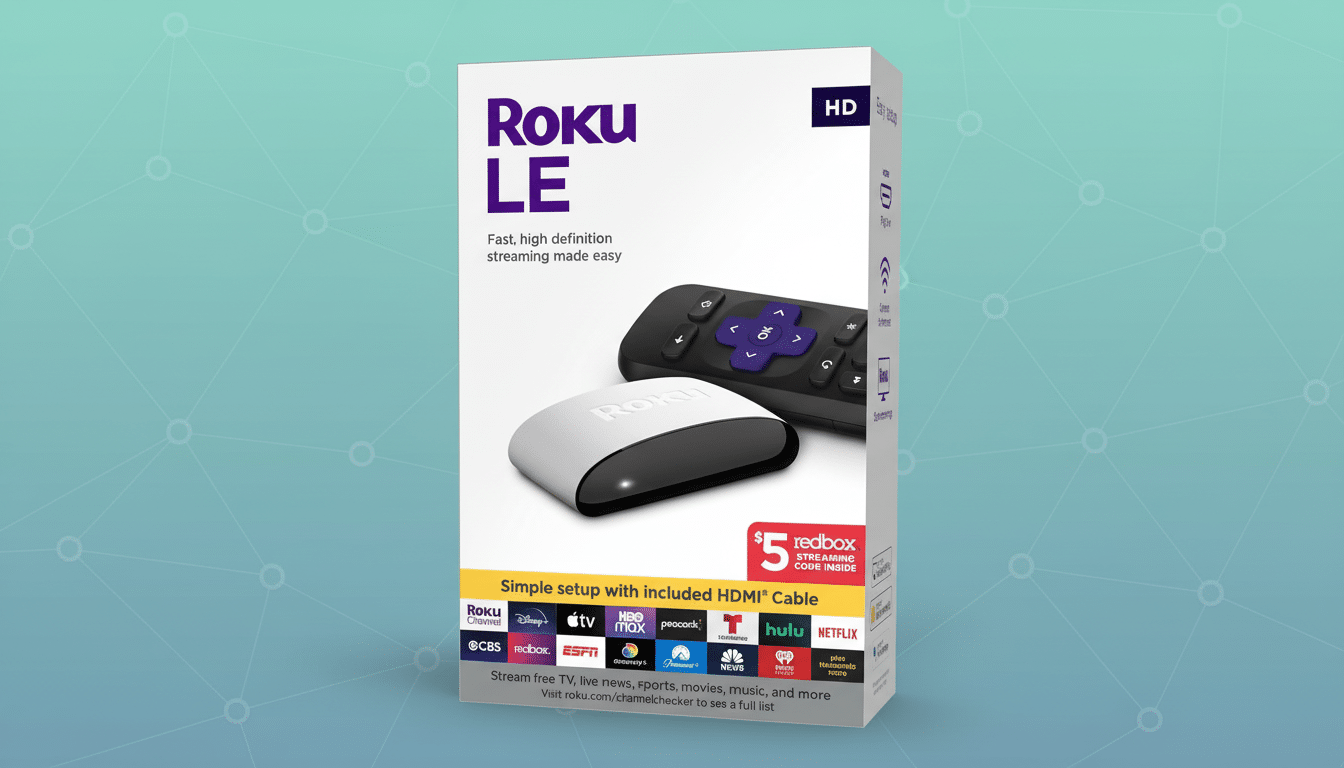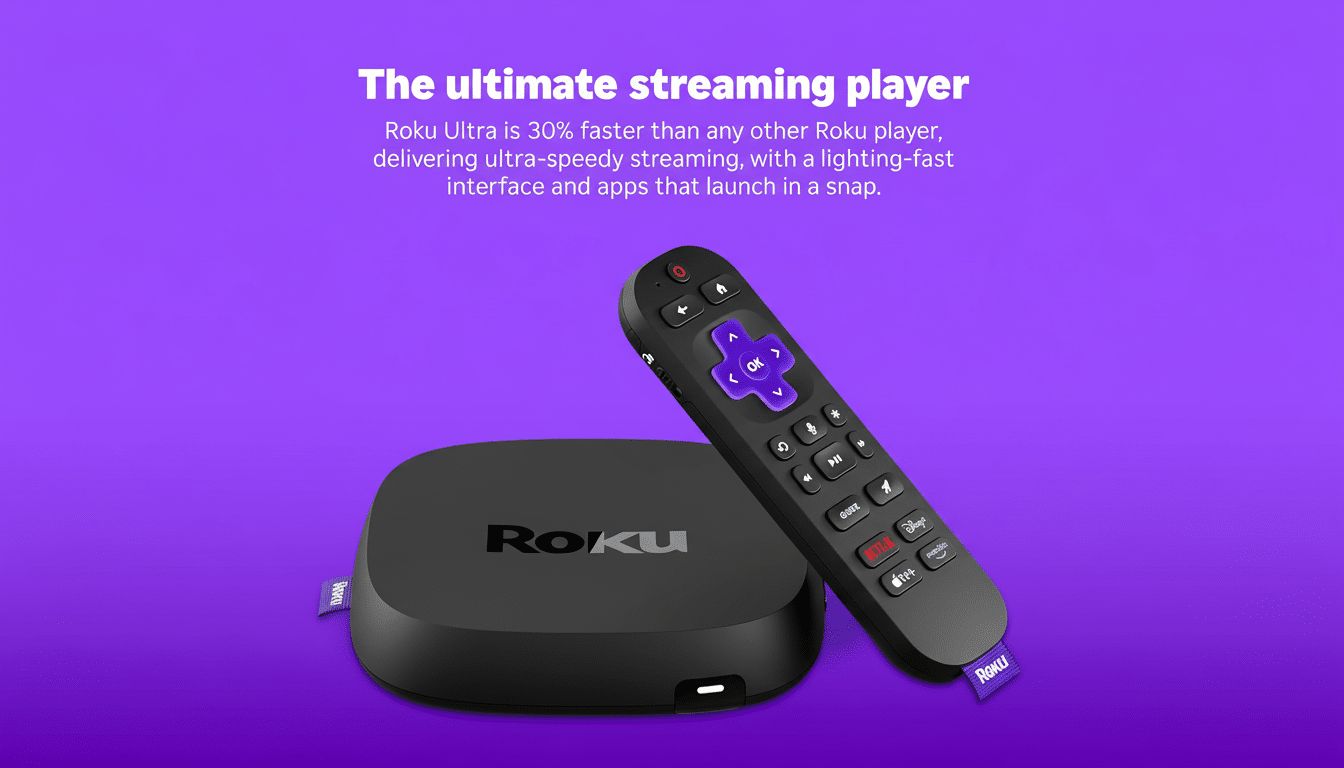If home TV streaming has a fatal flaw, it’s not picture quality or app selection. It’s decision fatigue. Viewers spend far too much time looking for something to watch through a maze of services and paywalls. Roku’s new platform update takes a direct shot at that pain with a bunch of discovery-focused features designed to turn intent into playback in fewer clicks.
Roku Sees Its Role as Streaming Discoverer, Not Just Apps
Roku’s approach is all about tearing down the time between “I’m in the mood for…” and “Now playing.” The company is embedding new intelligence into search, trailers, live sports tiles and the mobile app, in a bid to surface sources you are already paying for. The change is long in coming: Nielsen has found repeatedly that those in the United States spend about 10 minutes of a typical viewing session just searching, as catalogs balloon into the millions of titles. The pledge here is less browsing and more watching.
- Roku Sees Its Role as Streaming Discoverer, Not Just Apps
- Intent-parsing AI voice lets you ask natural questions
- Trailers can play and link to viewing options in fewer clicks
- Sports Discovery, Without The App Shuffle
- Using the mobile app as a smarter signal booster
- A Clear Step Toward Frictionless Streaming

Intent-parsing AI voice lets you ask natural questions
The big headline here is an AI-powered upgrade to Roku Voice. Instead of stern directives, you can inquire naturally “How scary is The Shining?” or “Show me more movies with this actor,” then continue without repeating it. Context exists from one query to the next, so “What about something lighter?” gets you results that are different, but without having to start over.
It matters, because today most search when you stream still expects that you know a title. Some nights, you only have a vibe to go on. By treating discovery as a conversation, Roku is mirroring how we really decide. That’s an interesting step up from keyword-based search — and closer in some ways to what the ever-nascent Google TV and Apple TV platforms have tried with aggregated recommendations, only with more of a focus on subtle, subjective nudging.
The AI experience is active on all Roku devices paired with a Voice Remote and via the mobile app. If it works as advertised, it ought to reduce by minutes the epic scroll loop that both Nielsen and Deloitte have identified as a source of viewer irritation — and churn.
Trailers can play and link to viewing options in fewer clicks
Roku is turning trailers into action points as well. New on-screen buttons allow you to transition immediately from a trailer to “Ways to Watch,” or just “Save.” Behind the scenes, Roku only serves up to two services for each title and brings your current subscriptions to the top of results, so there are fewer dead ends or surprise rental prompts.
That’s a small and quiet fix, but an important one. The platform is basically an auto-resolve, “Where do I have this streaming right now?” Parks Associates has found that households navigate multiple subscriptions, and being misdirected to paywalled or irrelevant options is a top frustration. By collapsing that decision tree, Roku removes friction at the precise moment you are ready to press play.
The Live TV Channel Guide and Live TV Zone now each have their own search bar to expedite grid-wide lookups in a location that would otherwise require slow scrolling. It’s just another little optimization that eliminates a paper cut every day.
Sports Discovery, Without The App Shuffle
Live sports are the only remaining close contender to keep people in cable bundles, and the streaming experience is often fragmented by league, rights deals and regional restrictions. Roku’s new sports discovery tiles show live scores at a glance and feature a Reminder button that pings you when a game is about to start — without needing to engage in a full deep dive into one particular app.

New personalization features that will allow people to set favorite teams and leagues ought to address relevance even more. This lowers the “which app is going to have my game tonight?” barrier for viewers. For the leagues and services, it could increase tune-in rates and session length — results that market trackers like Antenna link to lower churn.
Using the mobile app as a smarter signal booster
Roku’s mobile app is getting some useful shortcuts — closed captions, sleep timers, menus, and screenshots, to name a few — but most crucially it will also be able to rate titles and mark them as watched. Those signals inform the service as it uses them to refine recommendations and avoid resurfacing things you’ve already finished, a problem that plagues many services.
Even though these are signals confined to the Roku ecosystem, they influence lives. Stronger personalization lets the platform feel like it’s looking out for you rather than keeping you stuck in an endless browse. In the era of subscription cycling (a market Deloitte says is mature), anything that gets you to satisfying playback faster can keep you interested in and on the device you already have.
A Clear Step Toward Frictionless Streaming
None of this makes pricing and licensing complexity disappear, either. Fragmentation remains a reality. But by targeting discovery for voice, trailers, live sports and the app layer — with intelligent defaults that highlight what you’ve paid to see — Roku’s going after the part of streaming viewers feel every night.
Quality-of-life touches round it out. Bluetooth headphone mode arriving soon for more Roku sticks and the little Roku City experience aren’t going to solve discovery, but they do serve to remind that if we’ve learned anything over the last two days, it’s that the platform needs to be about removal of friction — not introduction of it.
If the AI “voice” functions as promised and the decision tree that powers “Ways to Watch” is the right one often enough, Roku will have finally solved streaming’s ultimate question: Too many viewing options, too little time.
The jury is still out on whether the platform’s new brain can actually break the scroll in practice over the next few weeks of real-world use.

